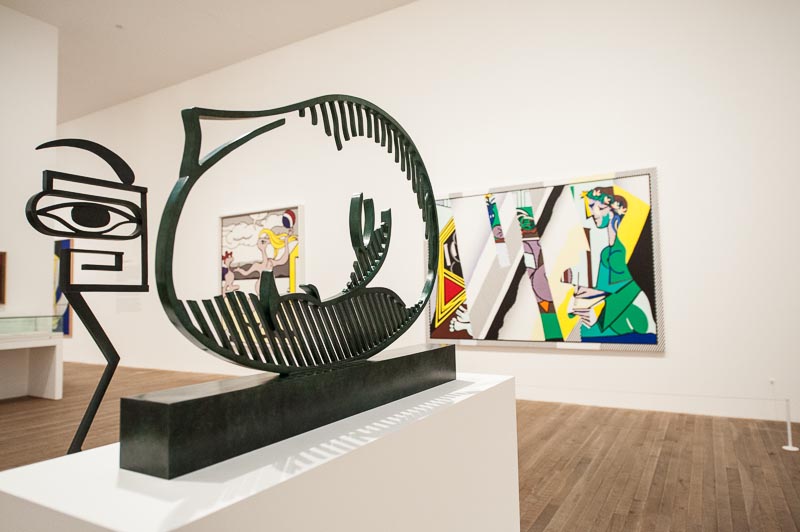Lichtenstein: A Retrospective at Tate Modern

Tate Modern is currently host to a retrospective dedicated to Roy Lichtenstein. Structured on a path through 13 rooms, the exhibition is a major tribute to one of the most important American artists of the 20th century. Lichtenstein is unanimously regarded as a key figure in modern art, deservedly or not, and he has the fame and success to prove it.
The exhibition offers an accurate insight into Lichtenstein’s work, spanning his entire career and explaining what was behind every choice he made. The exhibition really displays the artist’s struggle towards recognition: from his first attempts to find his way as a painter, through his coming to terms with free will about the subjects of his pictures, to his achievements.
Many of Lichtenstein’s iconic artworks, such as Whaam! (1963) or Oh, Jeff…I Love You, Too…But… (1964) drew heavily on themes of war and romance, which the artist (and certainly his art dealer) knew would appeal to a wider public. Nothing in Lichtenstein’s work is left to chance: not only did the painter aptly select his subjects, but he was also meticulously accurate in the execution of his pictures, polishing them until he got the outcome he wanted.
If Lichtenstein had lived in another era, he would simply have been tagged as a tireless perfectionist, devoted to his art. However, a son of the age of mechanical reproduction and omnipresent mass media, Lichtenstein is arguably a ruthless money-maker. Unlike many of his predecessors who only gained recognition for their work later in life (or posthumously), Lichtenstein is very self-conscious and proud of his paintings, the majority of which are mere results of controlled acts – “technical, almost engineered,” in his own words.
Examples are found everywhere in his repertoire, for instance in Brushstroke with Spatter (1966) where the spatter, which should be the effect of a casual spread of colour to be faithful to its title, has highly-defined black contours. This could be put down to his trademark style, along with the dots which feature in many of his works, but even those well-known dots are due to a mechanical application. Lichtenstein is no pointillist: he resorts to prefabricated Benday screens to make sure everything is as close to flawlessness as possible.
Lichtenstein is nonetheless an admirable painter. He made history because he shook up the dogmas and reinvented art in his own peculiar way. Isn’t that what all great personalities do, after all? Like it or not, his legacy remains.
Rita Vicinanza
Photos: Arnaud Stephenson
Lichtenstein: A Retrospective is at Tate Modern until 27th May 2013. For further information visit the gallery’s website here.


















Facebook
Twitter
Instagram
YouTube
RSS